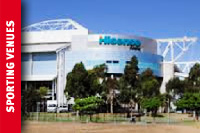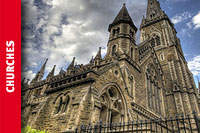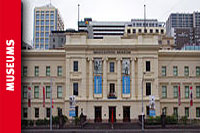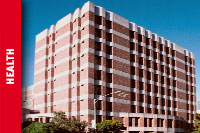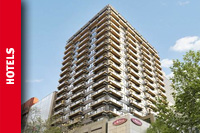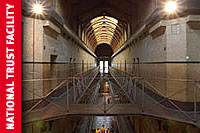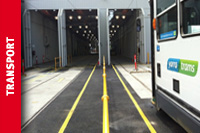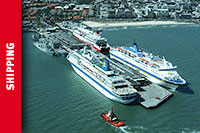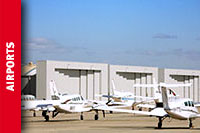FAQ
What is an Essential Safety Measure?
Why maintain essential safety measures?
Why do I need smoke detectors?
How do I choose a detector?
Why do I get false alarms?
How do Fire Sprinklers work as Fire Prevention Systems?
What are the types of Fire Sprinkler Systems?
What are the types of Dry Pipe Fire Sprinkler Systems?
What is an essential safety measure?
An essential safety measure is the fire and life safety items installed in a building to ensure adequate levels of fire safety. Some examples are sprinklers, mechanical services and fire doors.
Why maintain essential safety measures?
A building owner is responsible for the building's maintenance, particularly its essential safety measures.
The maintenance of essential safety measures will ensure that the fire safety systems remain at the required operational level.
Why do I need smoke detectors?
Most fire deaths happen at night, while people are asleep. This makes early fire detection and warning especially important.
Contrary to popular belief, the smell of smoke may not wake a sleeping person - instead, the poisonous gases and smoke can numb the senses resulting in a deeper sleep.
In the event of a fire, smoke detectors sound an alarm allowing time for escape - this cut the risk of dying in a fire by nearly half. Most states have laws requiring the compulsory installation of smoke detectors.
A smoke detector must bear the label of an independent testing laboratory, such as UL or FM.
Some types of detectors run on batteries, others on current or even be connected to complex fire indicator panels which can specifically identify location and smoke content.
A Ionization Smoke Detector can even detect a fire's invisible smoke particles. The smoke reduces the electric current within the unit which sets off the alarm.
A Photoelectric Smoke Detectors detects only those smoke particles large enough to be "seen" by the unit. The smoke blocks the path of a light beam within the detector.
There are units available that have both ionization and photoelectric detection which improve detector reliability hence reducing false alarms.
All approved smoke detectors, regardless of type, will offer adequate protection provided they are installed and maintained properly.
A smoke detector false alarm can be initiated by small dirt particles, smoke from cooking, placement too close to fluorescent lighting fixtures, and dust or temperature extremes. These may be present in office building, factories, kitchens to name a few.
Fresh paint fumes can also get heavy enough to cause a false alarm, as well as steam from bathrooms.
How do Fire Sprinklers work as Fire Prevention Systems?
Fire Sprinklers and Smoke Detectors work together to save life and property from fire.
When a fire starts, it heats the air directly above it causing the air to rise and be pushed out as it hits the ceiling. When this hot air reaches a sprinkler head, the sprinkler head is activated.
The sprinkler heads must detect a high enough temperature between 135 and 165 degrees Fahrenheit (57 to 74 Celsius). They are attached to a network of pipes which are connected to a reliable water source. When the sprinkler head is triggered, a valve to the pipe system is opened, releasing the water. The water is sprayed out extinguishing the fire below.
What are the types of Fire Sprinkler Systems?
There are several types of sprinkler systems. These include wet, dry, deluge, pre-action and foam. Each has its own unique set of characteristics.
The most commonly used pipes in commercial buildings are wet pipe systems. These are steel pipes that are always filled with water. When the sprinkler head is activated, the pressurized water in the pipes is immediately released, providing a faster reaction time.
The wet pipe system is the cheapest, simplest and most reliable. It is easier to install and requires low maintenance. However, since the pipes are always filled with water, this system is not recommended for locations where the pipes might freeze or where accidental leaks could be dangerous.
Dry pipe systems, comprise pipes that are not filled with water -- but instead filled with compressed air. When the sprinkler head is activated, a valve releases the compressed air through the sprinkler head which allows water to fill the system.
Dry pipe systems have a slower reaction time (up to a minute delay). But they release a larger amount of highly pressurized water. While there is no flooding threat due to a leaky pipe, maintenance to the system is more complicated.
What are the types of Dry Pipe Fire Sprinkler Systems?
Pre-action Dry Pipe Systems must be triggered twice before water is dispensed from a sprinkler head. The first trigger -- often a smoke detector or a heat detector, allows water into the pipes. Once this trigger occurs, the system serves as a wet pipe system. If there is a second trigger, the sprinkler head releases the water to extinguish the fire.
This type of system provides added protection against false sprinkler head activation. If a sprinkler head is falsely triggered, an alarm will sound, but no water will be released. Although sprinkler heads are unlikely to accidentally activate -- there is a one in 16 million false activation rate.
Pre-action systems are very popular when dealing with sensitive property like in a museum or library.
Deluge Dry Pipe Systems operate similar to the pre-action system where water enters the pipes only when triggered by a heat or smoke detector. A manual function can be set up too where pushing a button or pulling a cord activates the system.
Deluge systems differ to Pre-action systems as they are activated simultaneously.
Deluge systems are usually installed in chemical plants or other areas where the spread of fire would be exceptionally hazardous.

